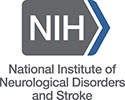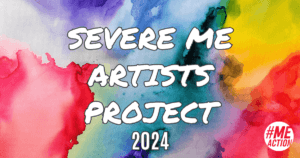A group of ME/CFS advocates worked together to submit a set of recommendations to NINDS as it ramps-up research into our disease. The recommendations, shown below, were prepared by the NIH Working Subgroup and endorsed by many of the organizations and advocates who have recently formed the US Action Working Group, including MEAction. The US Action Working Group is a loose coordination effort among many advocates to share information and identify areas of common support in pursuit of health equity for ME/CFS patients.
We submit ted the recommendations, big and small, to proactively contribute to a strong federal research program and to encourage collaboration between NIH and our community. The National Institute of Neurological Diseases and Strokes is leading NIH’s renewed research program on ME/CFS. Dr. Vicky Whittemore, ME/CFS Program Director, responded quickly saying she will present these ideas to the Trans-NIH Working Group for their consideration in an upcoming meeting.
ted the recommendations, big and small, to proactively contribute to a strong federal research program and to encourage collaboration between NIH and our community. The National Institute of Neurological Diseases and Strokes is leading NIH’s renewed research program on ME/CFS. Dr. Vicky Whittemore, ME/CFS Program Director, responded quickly saying she will present these ideas to the Trans-NIH Working Group for their consideration in an upcoming meeting.
The recommendations and endorsements follow.
March 1, 2016
Dear Dr. Koroshetz, Director, NINDS:
The ME/CFS community is united in its goal of reaching NIH funding commensurate with the burden and costs of our disease, and on par with research funding for diseases like multiple sclerosis. We seek a strong NIH research program that builds on existing expertise, recent findings, new technology and a growing understanding of subsets within the ME/CFS disease.
As you lead the Trans-NIH Working Group to form a strategic plan for ME/CFS research and execute the first intramural research study in our disease in decades, the patient community seeks to engage in a two-way process with your team. We bring not only the patient experience, but also disease research expertise, ideas, and a unique understanding of the complexity of our disease.
With a strong investment in NIH research, ME/CFS patients are within reach of diagnostic tests and FDA-approved treatments. It is essential that these next few years incorporate the deepest understanding of the disease to date and minimize pitfalls, so that your renewed commitment can build an NIH program that works to provide scientific answers to patients. Below are elements recommended by a broad group of ME/CFS advocates to inform your work to ramp-up ME/CFS research.
Elements of a Plan of Coordinated Activities to Ramp-Up ME/CFS Research
- Utilize ME/CFS clinical and research experts – for example those who have collaborated in recent NIH or CDC multi-site ME/CFS studies – in the diagnosis of patients to enroll in the NIH Clinical Center study, and its design, execution, and publications.
- Collaborate with the patient and expert community to generate a two-way process for permanent engagement in development, execution and monitoring of an ME/CFS Strategic Plan.
- Convene current ME/CFS disease experts to reach agreement on a consensus research definition and study standards, as recommended in the NIH P2P report, and incentivize studies utilizing the consensus definition and its subsets. Reconvene the expert panel on an ongoing basis (at least quarterly) to produce and validate consensus definitions of ME/CFS subsets.
- Identifying and characterizing subsets is critical to making progress in ME/CFS science. Therefore, contract with statisticians and CDC to analyze extensive data and samples already collected by CDC’s Multi-site Clinical Assessment Study and privately-funded data sources and biobanks.
- Identify and publish measures to produce homogeneous subsets for research. Identify and publish potential biomarkers for development of diagnostic tests and interventions in these subsets.
- Conduct a review of the ME/CFS grant-making process, including study section/institute assignment, review panel composition, scoring, Council review and final funding decisions. Identify barriers and biases that make it difficult for ME/CFS proposals to secure funding. Identify specific action items to overcome these barriers and correct for biases. Share this information with the public, either through the CFS Advisory Committee or other means.
- Issue RFAs every year for 5 years specifically for ME/CFS, targeting identification and validation of biomarkers, diagnostic tests, outcome measures, and identifying potential treatments. As recently as August 2015, CFSAC made detailed recommendations about the types of RFAs urgently needed to move the field forward. We seek RFAs totaling $7-10 million per year during this ramp-up period. Historically low levels of ME/CFS grant applications received using Program Announcements indicates RFAs are needed at least initially to stimulate researcher interest and bring new researchers into this field. The Trans NIH Working Group should set specific goals for the number of ME/CFS grant applications it receives and funds. The power of RFAs to stimulate researcher grants is unparalleled, and they are utilized by NIH for HIV, diabetes, cancer, Brain Initiative and Precision Medicine Initiative, as examples.
- Model Dr. Ian Lipkin’s involvement in ME/CFS. Dr. Lipkin was drafted by NIH leadership to solve the XMRV retrovirus controversy; his team created a multi-site collaboration with expert clinicians to collect samples and controls, and subsequently extended that model in execution of multiple immunological studies with groundbreaking new findings.
- We recognize that the NIH Clinical Center study, led by a top infectious neurologist, will produce substantial data and follow-up research questions in immunology, neurology, genetics and exercise physiology to use as a stimulus for the extramural grant program for ME/CFS. As part of an overall strategic plan, we propose the Trans-NIH Working Group prepare a strategy for collaborating with and drafting leading extramural geneticists, exercise physiologists, and neurologists to carry this work forward, similar to the model of work done by Dr. Lipkin’s team.
- Coupled with limited scientific research, there is an extremely limited availability of accurate diagnosis and care of ME/CFS patients. In collaboration with expert ME/CFS clinicians who lead the field in diagnosing, treating, and running clinical trials, partner with other agencies at HHS to establish Centers of Excellence in order to expand and model the highest standard of care available, integrate high-quality translational research, and provide rigorous settings to test scientific findings and potential treatments.
- Because the few ME/CFS expert clinicians now practicing are aging, training the next generation of ME/CFS clinician-scientists is critically needed. Establish ME/CFS training grants and fellowships to train the next generation of expert clinician-scientists, including those outside the university setting.
- Use ideas the Trans-NIH team raised in recent meetings and others below to pursue a communication strategy to create the understanding in the research community that ME/CFS is now a funding priority at the NIH:
- Produce a campaign that emphasizes the NIH’s new commitment to solving ME/CFS in order to bring new researchers into the field: “NIH needs you to help solve ME/CFS” or “NIH wants your grant applications on ME/CFS” “Dr. Collins: ME/CFS is solvable. Send us your grant applications.”
- Send notifications to University Department Chairs of Microbiology, Immunology, Neurology and Genetics, copied to grant administrators: “NIH wants your grant applications for ME/CFS”
- Proactive messaging at scientific conferences: Immunology, Neurology, NK cell conference, Autoimmunity, Genetics
- Booths with publications available re: ME/CFS
- Poster display of cutting edge research re: ME/CFS
- Dr. Koroshetz encourage scientific associations to invite ME/CFS experts to speak at conferences.
- Have Dr. Collins or Dr. Koroshetz write an op ed, and provide it and messaging materials to patient/expert community to disseminate in research and scientific publications.
Respectfully submitted,
Courtney and Robert Miller
Solve ME/CFS Initiative, Los Angeles, CA, national association
Health Rising, online patient community
Massachusetts CFIDS/ME & FM Association, Quincy, MA
ME Action Network, online patient community
Open Medicine Foundation, Agoura Hills, CA
Pandora Org, Inc., Traverse City, Michigan
ProHealth, online patient community
Simmaron Research, Incline Village, NV
Wisconsin ME and CFS Association, Inc.
Workwell Foundation, Ripon, CA
Mary Dimmock, CT
Jennifer Spotila, JD
Claudia Goodell, Race to Solve ME/CFS, online network
Billie Moore, New Jersey ME/CFS Association Advocacy Chair
Lily Chu, MD, MSHS – Independent Consultant – San Francisco, CA
Donna Pearson, Patient Advocate
Denise Lopez-Majano, Speak Up About ME
Gail Cooper, Oakland, CA
Sonya Heller Irey, MPIA




